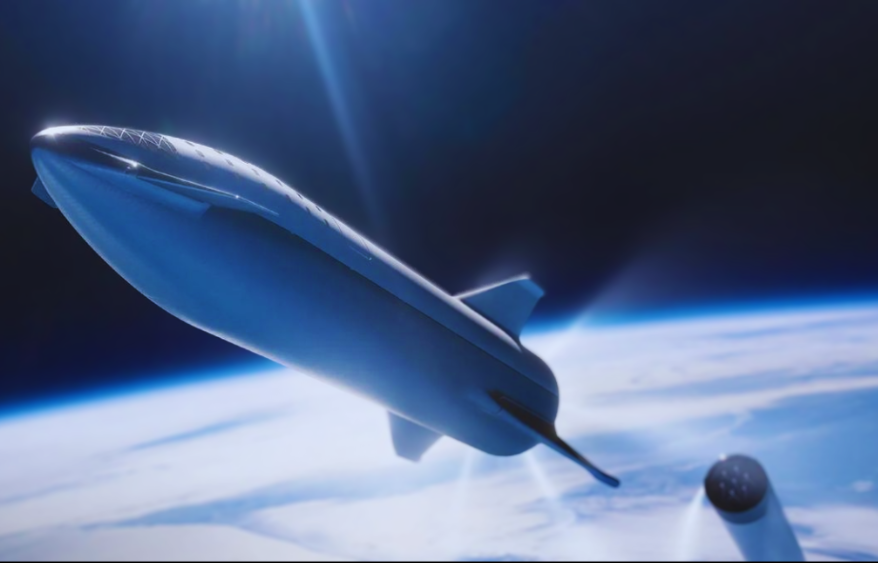As a component of NASA’s Artemis mission to return people to the Moon to help all, the organisation is working with SpaceX to foster the organisation’s Starship human landing framework (HLS), which will land space explorers close to the Moon’s South Pole during the Artemis III and Artemis IV missions. On Walk 14, SpaceX sent off the third coordinated flight trial of its Weighty Promoter and Starship upper stage, a significant achievement toward giving NASA a Starship HLS for its Artemis missions.

A supplement of 33 Raptor motors, energised by super-cooled fluid methane and fluid oxygen, controlled the Weighty supporter with Starship stacked on top, of the organization’s Starbase orbital platform at 8:25 a.m. CDT. Starship, utilizing six Raptor motors, isolated from the Weighty sponsor utilizing a hot-organizing method to fire the motors before division at roughly three minutes into the flight, as per the flight plan. This was the third flight trial of the incorporated Weighty Starship framework.
“With each flight test, SpaceX endeavours progressively aggressive targets for Starship to advance however much as could reasonably be expected for future mission frameworks improvement. The capacity to test key frameworks and cycles in flight situations like these coordinated tests permits both NASA and SpaceX to assemble vital information required for the proceeded advancement of Starship HLS,” said Lisa Watson-Morgan, HLS Program Supervisor at NASA’s Marshall Space Flight Center in Huntsville, Alabama. This test achieved a few significant firsts that will add to the improvement of Starship for Artemis lunar landing missions.
The space apparatus arrived at its normal circle and Starship finished the full-length rising consume. One target intently attached to future Artemis activities is the exchange of thousands of pounds of cryogenic fuel between inner tanks during the space apparatus’ coast stage as a feature of NASA’s Space Innovation Missions Directorate 2020 Tipping Point grants. The force move showed activities were finished, and the NASA-SpaceX group is at present inspecting the flight information that was gotten. This Tipping Point innovation show is one of more than 20 advancement exercises NASA has attempted to settle the difficulties of utilizing cryogenic liquids during future missions. As a vital stage toward understanding how super-cooled fuel sloshes inside the tanks when the motors shut down, and what that development means for Starship’s soundness while in circle, designers will concentrate on flight test information to survey the presentation of engines that control Starship’s direction in space.
They are likewise intrigued to find out about how the smooth motions inside the tanks can be settled to boost charge move productivity and guarantee Raptor motors get the required force conditions to help restart in a circle. “Putting away and moving cryogenic force in the circle has never been endeavoured on this scale,” said Jeremy Kenny, project supervisor, NASA’s Cryogenic Liquid Administration Portfolio at Marshall.
“Yet, this is a game-changing innovation that should be created and developed for science and investigation missions at the Moon, Mars, and those that will wander much more profoundly into our planetary group.” Under NASA’s Artemis crusade, the organization will land the main lady, first minority, and its most memorable global accomplice space explorer on the lunar surface and get ready for human endeavours to Mars. Business human landing frameworks are basic to profound space investigation, alongside the Space Send-off Framework rocket, Orion shuttle, high-level spacesuits and meanderers, investigation ground frameworks, and the Entryway space station.
PLEASE FOLLOW GEEK BUZZ FOR MORE SUCH INTERESTING ARTICLES.






